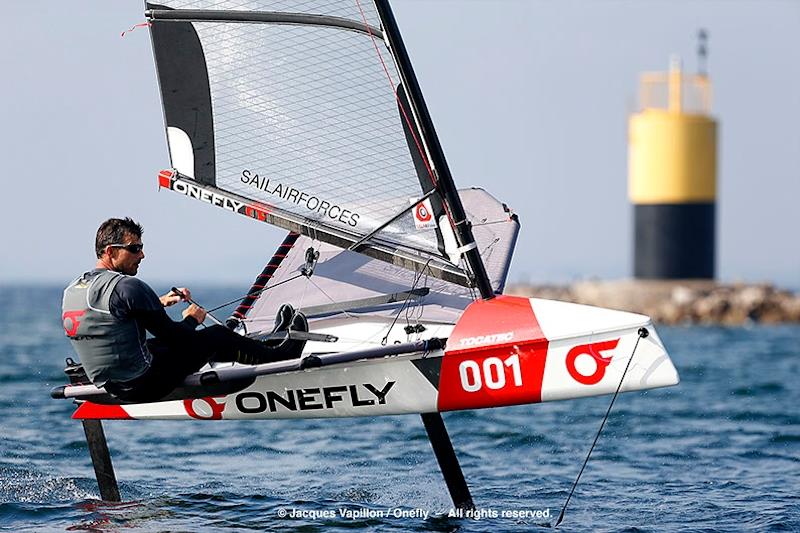
Soft Attachment Blocks - a guide to the basics by upffront.com
by Phil Anniss 25 Dec 2019 01:00 PST

Soft Attachment Blocks © Jacques Vapillion / Onefly
There has been a quiet revolution going on with block attachments over the last five years. Soft attachments are universally accepted as the preferred method of securing a block. In this blog we will explain why and then look at some of the basic attachment methods plus some do's and don'ts.
Block Terminology
Let's just establish some basic terminology...
Manufacturers have their own variations but in general, the important elements of a lash block are as follows:
- Loaded line - the running line which passes around the sheave.
- Lashing / attachment line - either a fixed lashing or it can be a strop or a soft shackle.
- Head - Traditionally the load transfer point between the cheeks and the attachment fitting (shackle) however in a lash block it is used to maintain alignment of the block.
- Cheeks - Traditionally all the block load would pass through the cheeks however in a lash block the cheeks act as a spacer to prevent the lashing line from clamping around the sheave and, working in conjunction with the head, helps block alignment.
- Sheave - exactly the same as a traditional block
- Hub / Mouth / Axle - the space at the centre of the sheave through which the lashing line passes, has many different names, depending on manufacturer. The only noteworthy difference between a standard block and a lash block is that the edges are radiused to prevent chafe. It is for this reason that a traditional block cannot generally be adapted to be a soft attachment block.
Why are they different?
The key difference between a traditional block and a lash block is that the attachment line / lashing passes directly through the center of the sheave. In a traditional block, the block cheek plates transfer the load from the sheave to the head of the block to the shackle attachment.
This inherently reduces failure risk of soft attach blocks because:
a) There are fewer parts involved
b) Even if the sheave itself failed, the loaded line would still be retained by the attachment lashing line.
Benefits of soft attachments compares to stainless shackles:
- Lightweight
- Strong and safe
- Abrasion resistant
- Corrosion free
- Self-align to load which lowers fatigue on block and loaded line
- Kind to mast, deck and sails with less noise
- Low maintenance
Do's and Don'ts
Always pass the attachment/lash line through the centre of the sheave:
- Never just pass the attachment line through the head of the block
- The cheeks of a lash block are not designed to take the working load of the block
Always ensure the attachment line is constrained at the head:
- There are two general types of soft attach block head - where the lash line passes through a central hole in the block head or where small lashing holes are provided to secure the attachment line with sailing twine.
- If the attachment line is not constrained the block can capsize.
Always ensure that the lashing/attachment line is secured to a point with radiused edges:
- E.g. Do not attach to cut metal eyestraps with sharp edges
More turns of a smaller diameter lash line generally provides a neater finish and is more easy to securely knot
Remember the break strength of a lash line is generally limited by the knot or splice, therefore the break strength of the lashing line needs to be considerably more than the break strength of the block
Use a secure knot:
- e.g. Carrick /Zeppelin/Hunters Bend
- Do not use a Reef / Granny / Square knot which can easily work its way lose
- Check out Animated Knots for more information on secure knots
Conclusion
One of the real attractions with soft attachment blocks is that they are so flexible in terms of application. Whilst it does take some time to get used to the different possible configurations, all the main manufacturers provide some good guides on techniques to get the most out of your lash blocks.
If you have any questions please do not hesitate to Contact us using our contact form or fill in the running rigging enquiry form.